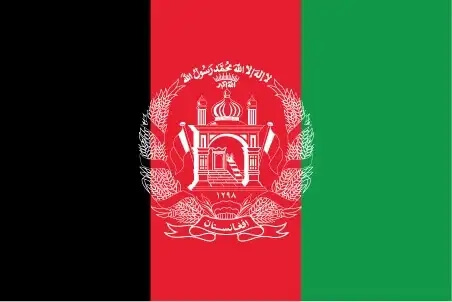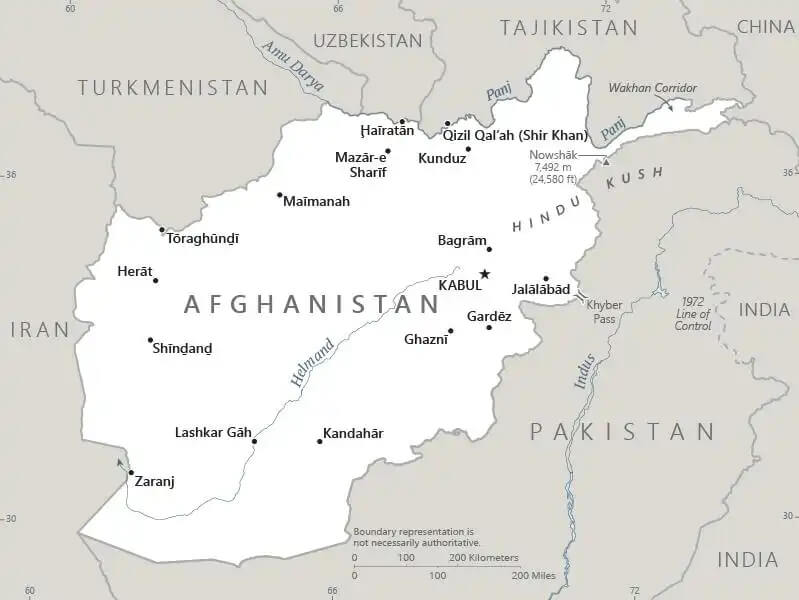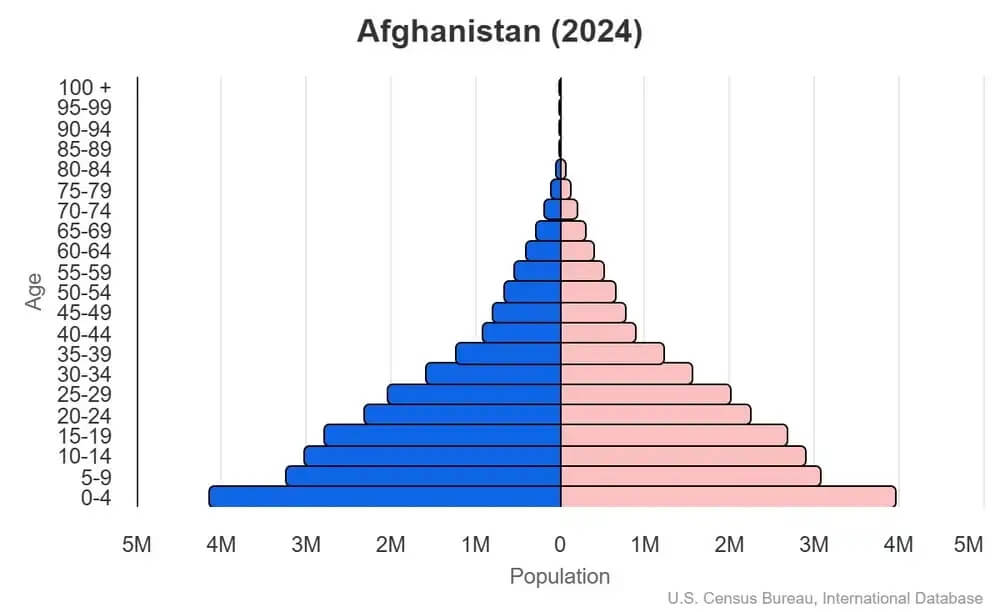World Book
Afghanistan
World Book Index
33


With a score of 33, the country is ranked 158th out of 158 countries in the World Book ranking. (more information)
Introduction
Background
Afghanistan served as a buffer between the British and Russian Empires until it won independence from British control in 1919. In August 2021, the Islamic fundamentalist Taliban overran the country, the latest group to rule in this war-torn country since 1979.
Geography
Area
total : 652,230 sq km
land: 652,230 sq km
water: 0 sq km
Climate
arid to semiarid; cold winters and hot summers
Natural resources
natural gas, petroleum, coal, copper, chromite, talc, barites, sulfur, lead, zinc, iron ore, salt, precious and semiprecious stones, arable land
People and Society
Population
total: 40,121,552 (2024 est.)
Ethnic groups
current, reliable statistical data on ethnicity in Afghanistan are not available; Afghanistan's 2004 Constitution cited Pashtun, Tajik, Hazara, Uzbek, Turkman, Baluch, Pashaie, Nuristani, Aymaq, Arab, Qirghiz, Qizilbash, Gujur, and Brahwui ethnicities; Afghanistan has dozens of other small ethnic groups
Languages
Afghan Persian or Dari (official, lingua franca) 77%, Pashto (official) 48%, Uzbeki 11%, English 6%, Turkmani 3%, Urdu 3%, Pashaie 1%, Nuristani 1%, Arabic 1%, Balochi 1%, other <1% (2020 est.)
Religions
Muslim 99.7% (Sunni 84.7 - 89.7%, Shia 10 - 15%), other <0.3% (2009 est.)
Population growth rate
2.22% (2024 est.)
Government
Government type
theocratic; the United States does not recognize the Taliban Government.
Capital
name: Kabul
Executive branch
chief of state: Taliban Leader HAYBATULLAH Akhundzada (since 15 August 2021)
head of government: overall Taliban Leader HAYBATULLAH Akhundzada is the [so-called] Amir-ul Momineen of the Taliban and is seen by them as a head of government
Economy
Economic overview
low-income South Asian economy; economy stable after major contraction due to Taliban takeover, but recovery remains fragile; widespread poverty and obstacles to human development; import-reliant for food, fuel, and machinery; ongoing sanctions, suspended development aid, and frozen reserve assets
Real GDP (purchasing power parity)
$82.238 billion (2023 est.)
$80.416 billion (2022 est.)
$85.768 billion (2021 est.)
Real GDP per capita
$2,000 (2023 est.)
$2,000 (2022 est.)
$2,100 (2021 est.)
Exports
$1.476 billion (2020 est.)
$1.516 billion (2019 est.)
$1.609 billion (2018 est.)
Exports - partners
Pakistan 42%, India 40%, China 4%, UAE 2%, Turkey 2% (2023)
Exports - commodities
coal, grapes, tropical fruits, gum resins, other nuts (2023)
Imports
$6.983 billion (2020 est.)
$7.371 billion (2019 est.)
$7.988 billion (2018 est.)
Imports - partners
UAE 28%, Pakistan 15%, China 15%, Uzbekistan 12%, Kazakhstan 9% (2023)
Imports - commodities
wheat flours, tobacco, palm oil, broadcasting equipment, synthetic fabric (2023)
Human Development Index
The country's Human Development Index (HDI) is 0.496, ranking it 181st out of 193 countries tested. (more information)
World Happiness Report
The World Happiness Report ranked the country 158th out of 158 countries tested with a score of 1.721. (more information)



